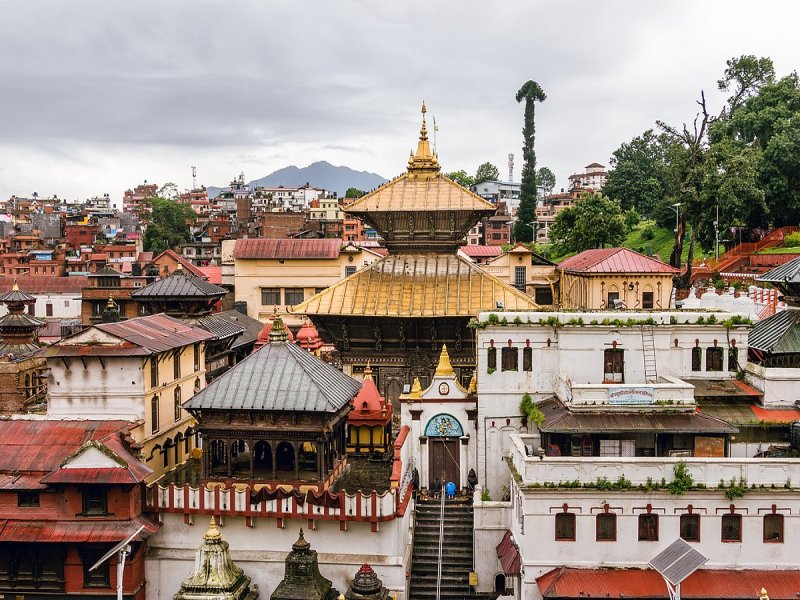Pashupatinath Temple, nestled on the banks of the Bagmati River in Kathmandu, stands not only as a spiritual beacon but also as a cornerstone of Nepal’s tourism industry. This ancient Hindu temple complex, dedicated to Lord Shiva in his manifestation as Pashupati, holds profound historical, cultural, and architectural significance that draws pilgrims and tourists alike from around the globe.
Historical Significance:
Pashupatinath Temple’s origins date back over 2,000 years, making it one of the oldest and most revered temples in Nepal. Its exact founding remains shrouded in legend, but the temple as it stands today is a blend of ancient and more recent architectural styles, reflecting centuries of devotion and craftsmanship.
Cultural Hub and Spiritual Center:
Pashupatinath is revered as one of the holiest Hindu temples dedicated to Lord Shiva. Its origins date back to ancient times, with the current temple complex built in the 5th century by King Prachanda Deva of the Lichchhavi dynasty. The temple’s intricate pagoda-style architecture, adorned with wood carvings and golden spires, reflects Nepal’s rich cultural heritage.
The temple complex encompasses various smaller shrines, ashrams, and ghats (cremation platforms), where Hindu rituals and ceremonies take place daily. The main attraction, the Pashupatinath Temple itself, sees thousands of pilgrims and devotees flocking during festivals like Maha Shivaratri and Teej, enhancing its spiritual ambiance and cultural vibrancy.
Architectural Marvels:
The temple’s architecture is a testament to Nepal’s rich architectural heritage. Intricate wood carvings, golden spires (pagoda-style), and sacred sculptures adorn the temple complex, showcasing the skilled craftsmanship of Nepalese artisans over the centuries.
Tourism Magnet:
Beyond its religious significance, Pashupatinath offers tourists a glimpse into Nepal’s spiritual and architectural heritage. Visitors can explore the intricate artwork and sculptures depicting Hindu mythology, participate in religious rituals, and observe the cremation ceremonies along the Bagmati River, which are both a solemn tradition and a unique cultural experience.
The temple complex also houses the Pashupati Area Development Trust (PADT), which oversees conservation efforts, maintenance of the premises, and facilitates tourist services. PADT plays a crucial role in preserving the site’s cultural integrity while accommodating the needs of tourists and pilgrims.
Challenges and Conservation Efforts:
Despite its popularity, Pashupatinath faces challenges such as environmental degradation, overcrowding during peak seasons, and the need for ongoing conservation efforts. Issues like pollution in the Bagmati River and the impact of heavy foot traffic on the temple structures require sustainable solutions to preserve this cultural treasure for future generations.
Efforts by PADT and other stakeholders focus on maintaining cleanliness, promoting responsible tourism practices, and raising awareness about the site’s cultural and environmental significance. Initiatives like the restoration of heritage structures, improved waste management, and educational programs aim to balance tourism growth with conservation goals.
Economic Impact:
The temple complex also serves as an economic hub for local communities, supporting businesses ranging from souvenir shops to hospitality services. The influx of pilgrims and tourists sustains livelihoods and contributes to the broader economy of Kathmandu and Nepal as a whole.
Future Prospects:
Looking ahead, sustainable tourism practices and enhanced infrastructure around Pashupatinath Temple could further bolster its appeal while ensuring its preservation. Continued collaboration between government bodies, local communities, and religious authorities will be crucial in safeguarding this iconic symbol of Nepal’s spiritual and cultural heritage.
Pashupatinath Temple stands not only as a place of worship but also as a cornerstone of Nepal’s tourism sector, inviting visitors to experience the depth of its spiritual traditions and the beauty of its architectural marvels. Its enduring presence underscores Nepal’s unique blend of ancient spirituality and vibrant cultural vitality on the global stage.






